
About UsThe Numismatic Bibliomania Society is a non-profit organization promoting numismatic literature. For more information please see our web site at coinbooks.org SubscriptionsThose wishing to become new E-Sylum subscribers (or wishing to Unsubscribe) can go to the following web page link MembershipThere is a membership application available on the web site Membership Application To join, print the application and return it with your check to the address printed on the application. Membership is only $15 to addresses in the U.S., $20 for First Class mail, and $25 elsewhere. For those without web access, write to: David M. Sundman, Treasurer AsylumFor Asylum mailing address changes and other membership questions, contact David at this email address: dsundman@LittletonCoin.com SubmissionsTo submit items for publication in The E-Sylum, just Reply to this message, or write to the Editor at this address: whomren@gmail.com
BUY THE BOOK BEFORE THE COIN |
- WAYNE'S WORDS: THE E-SYLUM OCTOBER 6, 2013
- KOLBE-FANNING 130TH SALE RESULTS
- LAKE BOOKS 116TH MAIL BID SALE CLOSES OCTOBER 29, 2013
- NEW BOOK: THE NATIONAL COIN ALBUM AND RELATED PRODUCTS
- NEW BOOK: APOTHEOSIS OF GALLIC COINS
- NEW BOOK: MONEY OF THE BIBLE, 3RD EDITION
- CIVIL RIGHTS ACT OF 1964 SILVER DOLLAR DESIGN RECOMMENDATION
- NOTES FROM E-SYLUM READERS: OCTOBER 6, 2013
- PEALE'S PHILADELPHIA MUSEUM PASS TOKEN NO. 1
- ON THE LEGALITY OF USING CANCELLED MINT DIES
- QUERY: INDEX FOR NUMISMATIC NEWS, WORLD COIN NEWS SOUGHT
- HARVEY STACK ON THE JAMES STACK COLLECTION, PART 2
- A CANADIAN CENT OVERSTRIKE ERROR
- MORE RESEARCH ON THE COIN COLLECTORS KLINE
- COINS, TOKENS AND MEDALS WITH IMAGES OF BOOKS
- ARTICLE HIGHLIGHTS CARSON CITY MINT HISTORY
- SS CENTRAL AMERICA RECOVERY EFFORTS COULD RESUME IN 2014
- NUMISMATIC SURVEY OF EGYPT AND ALEXANDRIA, PART I
- A VISIT TO COLONIAL WILLIAMSBURG'S NUMISMATIC EXHIBITS
- SOME INTERESTING MEDALS: OCTOBER 6, 2013
- ANS SEEKS ASSISTANT CURATOR OF AMERICAN COINS AND CURRENCY
- SOME NEW COIN DESIGNS: OCTOBER 6, 2013
- TALES YOU LOSE: ARTIST PAINTS COINS
- THE 1886 QUARTER DOLLAR PUZZLE
- FEATURED WEB PAGE: THE FITZWILLIAM MUSEUM
Click here to access the complete archive
To comment or submit articles, reply to whomren@gmail.com
WAYNE'S WORDS: THE E-SYLUM OCTOBER 6, 2013

New subscribers this week include Bill Miller, Rich Eckhardt and Ryan Eckhardt, courtesy of Russ Sears, Lisa M. McCullough of Littleton Coin Co, Robyn Einhorn of the National Numismatic Collection, Charles Morgan and Petr Mares. Welcome aboard! We have 1,675 email subscribers, plus 247 followers on Facebook.
This week we open with a report on their recent numismatic literature sale from Kolbe & Fanning, and a reminder of Lake Books' upcoming sale. And don't forget, David Sklow's 20th sale closes on October 12, 2013. Next up are reports on three new numismatic books.
Other topics include designs for the 1964 Civil Rights Act dollar, the legality of using cancelled mint dies to strike medals, the Carson City Mint, Colonial Williamsburg's numismatic collections, and much more on the Collectors Kline.
To learn more about job openings for numismatic researchers, Charlemagne's son Louis, Peale's Philadelphia Museum pass, Winslow Howard's 1855 Kline sale purchases (totaling a whopping $32.75), the earliest medal showing a book and new plans to scour the wreck of the SS Central America, read on. Have a great week, everyone!
Wayne Homren
Editor, The E-Sylum
KOLBE-FANNING 130TH SALE RESULTS
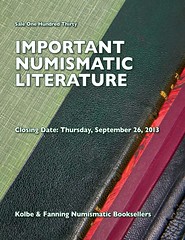 Kolbe & Fanning Numismatic Booksellers held their 130th mail-bid sale of important numismatic books on Thursday, September 26. The sale featured over 600 lots of material on ancient, medieval, foreign and U.S. numismatics. The sale did well, reflecting the continued demand for rare and out-of-print reference works and collectible numismatic publications.
Kolbe & Fanning Numismatic Booksellers held their 130th mail-bid sale of important numismatic books on Thursday, September 26. The sale featured over 600 lots of material on ancient, medieval, foreign and U.S. numismatics. The sale did well, reflecting the continued demand for rare and out-of-print reference works and collectible numismatic publications.
Some highlights included:
—J. Francis Fisher’s 1837 Description of American Medals (lot 459) brought $3162.50 (all prices include the 15% buyers’ premium)
—An original set of the French Van Loon (lot 186) sold for $2850.00
—A set of photographic prints depicting U.S. large cents from the Lou Helfenstein collection sold for a very strong $2530 on a $250 estimate
—A complete set of Mehl’s Numismatic Monthly (lot 516) brought $2300
—Henry Chapman’s 1918 Jackman sale, with plates (lot 426) sold for $2012.50
—An 1879 holograph letter from A. Loudon Snowden on electrotyping coins in the U.S. Mint Cabinet (lot 586) brought $1437.50 on very strong bidding
—The Archiv für Medaillen- und Plaketten-Kunde (lot 116) brought $1380.00
—Thomas Egerton Tatton’s annotated copy of Conder’s 1798 first edition of An Arrangement of Provincial Coins sold for $1035.00 on a $500 estimate
—A nicely bound volume containing all three Jacob Hirsch Ars Classica sales featuring the Clarence Bement collection of ancient coins brought $948.75 on a $500 estimate
—Alföldi’s Caesar in 44 v. Chr. (lot 4) sold for a robust $833.75.
Kolbe & Fanning’s next sales will be our January 11, 2014 public auctions held at the Waldorf-Astoria Hotel in New York City in conjunction with the New York International Numismatic Convention. We will be holding two sales on what should prove to be a very busy day for numismatic bibliophiles. The morning will see us offering highlights from the Quentin Archer library on Russian numismatics. The afternoon will be devoted to selections from the comprehensive library on ancient coins formed by Herbert Kreindler. The Kreindler library sale is a joint effort between our firm and Fritz Rudolf Künker GmbH; an eLive online sale featuring the remainder of the Kreindler library will be held soon after the public sale (exact date to be announced).
For more information on our activities, please contact David Fanning at df@numislit.com or (614) 414-0855. We appreciate your business!
LAKE BOOKS 116TH MAIL BID SALE CLOSES OCTOBER 29, 2013
Lake Books is announcing that its 116th mail-bid sale of numismatic literature is now available for viewing on their web site at www.lakebooks.com/current.html. The 509-lot sale contains selections from the libraries of Chuck Heck and John Tidwell and will close on Tuesday, October 29, 2013 at 5:00 PM (EDT).
Highlights feature over forty hardbound Bowers auction catalogs, a long run of New Netherlands sales (including the first five); sales by Chapman, Low, Frossard, Ira and Larry Goldberg, Heritage, etc. that include excellent reference material for early copper large cents and half cents.
Ancient through Medieval coinage will be found in the Numismatic Ars Classica and UBS auction catalogs in another section of the sale. As is usual, there are a number of lots containing books on paper money, tokens and medals, guide books and exonumia.
Bids may be placed via email, regular mail, fax or telephone until the closing time.
Good Luck with your bidding, Fred
Lake Books
PMB 118
6822 22nd Ave N
St. Petersburg, FL 33710
727-343-8055 Fax: 727-381-6822
http://www.lakebooks.com

NEW BOOK: THE NATIONAL COIN ALBUM AND RELATED PRODUCTS
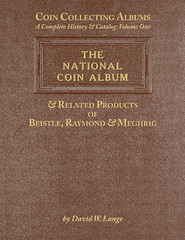 David W. Lange’s new book, Coin Collecting Albums – A Complete History & Catalog Volume One: The National Coin Album & Related Products of Beistle, Raymond & Meghrig, is now in stock and ready for purchase. This is the first book to study the landmark coin album series and other coin holders produced by these three publishers. All offered a similar product line that today is known collectively as the National or “Raymond” coin album.
David W. Lange’s new book, Coin Collecting Albums – A Complete History & Catalog Volume One: The National Coin Album & Related Products of Beistle, Raymond & Meghrig, is now in stock and ready for purchase. This is the first book to study the landmark coin album series and other coin holders produced by these three publishers. All offered a similar product line that today is known collectively as the National or “Raymond” coin album.
Lange’s new book explains the history behind these various lines and identifies how they are similar and where they differ. A complete, detailed catalog is included which lists every known variety of each title. This promises to bring order to their collecting and trading, which until now has been mostly a matter of guesswork and erroneous claims.
Thoroughly researched and richly illustrated, this book is nearly 300 pages long, including 80 pages in full color. Portraits of the individual publishers, their business locations and original documents are among the hundreds of images. All types of albums produced by the three named publishers are illustrated, and included are numerous detail images that reveal their distinctive features for ease of identification within the catalog pages. The several catalogs within the book provide each album entry with a unique Lange Number for exact communication between collectors.
Lange’s new book is hard covered and is printed entirely on 100-pound coated stock. This is a high quality book that is meant to last, and its cover actually reproduces the image of a National Coin Album binder. It is also anticipated that this will be the first in a multi-volume series of books relating the entire history of coin albums and folders published in the USA.
The new book is priced at $75, and buyers should include $10 for priority mail shipping. Lange is also offering a close-out special on his previous book, Coin Collecting Boards of the 1930s & 1940s: A Complete History, Catalog and Value Guide. This popular title provides a similar treatment to the large, one-piece coin boards which kick-started the coin collecting hobby during the Great Depression. Published at $39.95, this title is now just $20. If both books are ordered, the shipping cost is $12. All books purchased from David W. Lange will be signed, and personalized inscriptions are available upon request. Payment may be made by check made out to David W. Lange or via PayPal to LangeDW@msn.com.
A collector of coin boards and albums for more than 30 years, David W. Lange is best known as Research Director for Numismatic Guaranty Corporation in Sarasota, Florida, as well as the author of six popular books on United States coinage and U. S. Mint history. His column, “USA Coin Album,” appears monthly in The Numismatist, the official magazine of the American Numismatic Association.
David W. Lange may be contacted at POB 110022, Lakewood Ranch, FL 34211 or by email at langedw@msn.com. His website address is www.coincollectingboards.com, and from this site he also buys and sells vintage coin boards. A new website for his publishing imprint, www.pennyboardpress.com, is currently under preparation.
Dave adds:
I'm really delighted by how nice the book looks and feels in hand. I went all out with this project, and have no regrets. The books were printed in the USA, which cost more than having it done in China, but it gave me greater confidence that the sharpness and color accuracy of the photos would be maintained. This was achieved, and readers will be able to distinguish between subtle color variances that distinguish different numbered varieties.
NEW BOOK: APOTHEOSIS OF GALLIC COINS
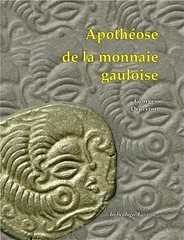 TITLE: Apothéose de la monnaie gauloise
TITLE: Apothéose de la monnaie gauloise
AUTHOR: Georges Depeyrot
PAGES: 156 pages
PHOTOS: More than 400 photos.
PRICE: EUR 24,70
Gallic coins were first copied from Greek and Roman models and created, after decades, their own styles and images influenced and reinterpreted by Celtic art. The 3rd-1st centuries were a period of development of the graphic creativity of the Gallic tribes.
In this period, the Celts invented all their symbols and affirmed their identity in new representations becoming more abstract and often of great beauty, far from the classic styles of Rome.
Coins hold an important role in the study of art and history of the Gallic Celts as the issues were important, produced by many mints, each one creating a specific way to engrave the dies and adding symbols.
This volume is the second part of a general study of Gallic coins (actually France, Belgium and part of Germany and Switzerland). The first one (La monnaie gauloise, maissance et evolution) was published in February 2013. The first volume is focused on silver coins of the southern populations and on the development of gold coins.
This second book is more focused on billon and silver coinage of the 2nd-1st centuries BC, and the development of very large issues some of which bearing the names of the generals named in the volume of Cesar.
For more information or to order, see: Apothéose de la monnaie gauloise (www.amazon.fr/Apoth%C3%A9ose-monnaie-gauloise-Georges-Depeyrot/dp/B00DW126XS/)
For more information or to order the first volume, see: La monnaie gauloise, maissance et évolution (www.amazon.fr/La-monnaie-gauloise-Georges-Depeyrot/dp/B009HRGEEI/ref=sr_1_3?ie=UTF8&qid=1381074243&sr=8-3&keywords=depeyrot+georges)
NEW BOOK: MONEY OF THE BIBLE, 3RD EDITION
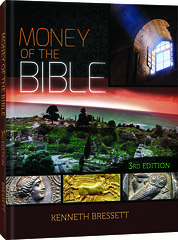 Whitman Publishing announces the release of the expanded and revised third edition of Kenneth Bressett’s award-winning Money of the Bible. The 120-page hardcover coffee-table book debuted at the American Numismatic Association World’s Fair of Money in Chicago, August 13, 2013. Bressett was on hand to autograph copies at the Whitman Publishing booth. Money of the Bible is now available online (including at www.Whitman.com) and from bookstores and hobby shops nationwide. Its retail price is $29.95.
Whitman Publishing announces the release of the expanded and revised third edition of Kenneth Bressett’s award-winning Money of the Bible. The 120-page hardcover coffee-table book debuted at the American Numismatic Association World’s Fair of Money in Chicago, August 13, 2013. Bressett was on hand to autograph copies at the Whitman Publishing booth. Money of the Bible is now available online (including at www.Whitman.com) and from bookstores and hobby shops nationwide. Its retail price is $29.95.
“Money and coins are mentioned many times, and in many places, in the Old and New Testaments,” Bressett said. “They give us a running commentary on biblical events in a way that no other artifacts can supply.” He presents their stories and explores their relevance in the updated third edition of Money of the Bible, which includes expanded text and many additional and upgraded photographs.
The first edition won the 2006 “Best Specialized Book, World Coins” Award from the Numismatic Literary Guild. BookIdeas senior editor John L. Hoh called it “a wonderful reference book for church libraries.” Ancient-coin specialist David L. Vagi praised “the clarity of the text and the lavish illustrations,” saying that “experienced numismatists will enjoy Mr. Bressett’s careful investigations of theories and the finer points of evidence.” Author and scholar Dr. Paul Rynearson, who wrote the book’s foreword, said, “This reference makes coins come alive, visually expanding Biblical texts, while the beautiful photographs of historical places and artifacts make the words resonate in our hearts. You will discover fascination on every page.”
Bressett, perhaps best known as the longtime editor of the annual Guide Book of United States Coins (the “Red Book”), has also researched and written about English coinage, ancient Greek and Roman coins, U.S. paper money, grading standards, buying and selling coins, and many other hobby topics.
In Money of the Bible he studies how the Bible was written, and its nature; commerce before coins; coins of Old Testament times; coins in the New Testament; first-century money and trade; coins mentioned in Jesus’ parables and lessons; coins and the Passion of Christ; the beginning and spread of Christianity; and how to collect coins with Biblical themes. A detailed index of terms and Bible verses rounds out the text and its full-color photographs.
“In Money of the Bible, Kenneth Bressett opens a window onto everyday life in the ancient world,” said Whitman publisher Dennis Tucker. “Parables like that of the moneychangers in the Temple take on new meaning when you’re looking at the actual coins people used in Biblical times.”
Illustrated essays examine the money the Good Samaritan would have used to pay the innkeeper; anti-Semitic insults used on Roman imperial coins; early images of Christ and angels; why a fish might have a silver coin in its mouth; and many other fascinating topics.
Narratives new to the third edition explore the beginning of Christianity and its early distinction from Judaism; the conversions of the Axumite kingdom and of Armenia; Jewish uprisings under Roman emperor Trajan; cherubim, seraphim, and lammasu; the recovery of the True Cross by Byzantine emperor Heraclius; Arab-Byzantine conflicts; and an expanded section on collecting coins with Biblical topics.
Among the dozens of new coin photographs are those illustrating Hadrian at Alexandria, the Colossus of Rhodes, and a Macedonian peace design; a silver shekel of Byblos; a Roman silver denarius of Marc Antony; early electrum money units; a heathen coin of the sea god Poseidon; a coin of the nightmarish emperor Caius Caligula; and many others.
Money of the Bible: A Numismatic Chronicle of Events, 3rd edition ∙ Kenneth Bressett ∙ Foreword by Paul Rynearson ∙ ISBN 079483955X ∙ 120 pages ∙ Coffee-table (10 x 12 inches) hardcover with dustjacket ∙ Full color ∙ Retail $29.95
For more information, or to purchase, see: Money of the Bible - 3rd Edition (/www.whitman.com/store/Inventory/Detail/Money-of-the-Bible---3rd-Edition+079483955X)

CIVIL RIGHTS ACT OF 1964 SILVER DOLLAR DESIGN RECOMMENDATION
One of the two commemorative coin programs authorized for the coming year will mark the 50th anniversary of the enactment of the Civil Rights Act of 1964. The program will feature a silver dollar with a maximum mintage of 350,000 pieces.
The authorizing legislation provides that the designs for the coin “shall be emblematic of the enactment of the Civil Rights Act of 1964 and its contribution to civil rights in America.” The Commission of Fine Arts (CFA) and Citizens Coinage Advisory Committee (CCAC) recently reviewed design candidates and gave their recommendations.
The United States Mint had provided a slate of 15 different obverse and 10 different reverse designs for the 2014 Civil Rights Act of 1964 Silver Dollar, which can all be viewed in this article: 2014 Civil Rights Act of 1964 Silver Dollar Designs Reviewed by CCAC (news.coinupdate.com/civil-rights-act-of-semi-centennial-silver-dollar-designs-reviewed-by-ccac-2133/)

The CCAC recommended the obverse and reverse designs shown above. The obverse depicts the March on Washington inside a silhouette of the Liberty Bell with reverberating bands and the inscription “Let Freedom Ring…” The throng of people by the reflecting pool would have been Martin Luther King’s view from the Lincoln Memorial. The rays beyond the Washington Monument represent the dawn of the bright day of justice as quoted by Dr. King in his speech.
The reverse design depicts three intertwined flames symbolizing freedom of education, freedom to vote, and the freedom to control one’s destiny. The design was developed based on the quote by Dr. King, “They get the fire hose. They fail to realize that water can only put out physical fire. But water can never drown the fire of freedom.” The CCAC did suggest that the cauldron at the base of the flames should be enlarged or emphasized.
To read the complete article, see: Vote on the 2014 Civil Rights Act of 1964 Silver Dollar Design (mintnewsblog.com/2013/10/vote-on-the-2013-civil-rights-act-of-1964-silver-dollar-design/)
NOTES FROM E-SYLUM READERS: OCTOBER 6, 2013
Correction: Charlemagne & Son
Tom Fort writes:
The denarius of "Charlemagne (768-814)" pictured in the excerpt from the CoinsWeekly article is in fact one of his son Louis the Pious (814-840). The obverse reads HLVDOVICVS IMP AVG not CAROLVS IMP AVG as the later "imperial" coins of Charlemagne do. The coin is thus dated to sometime between 814-and 816 and was struck at the mint of Quentovic.
I passed this along to Editor Ursula Kampmann, who writes:
Thanks, and compliments to your reader. We realized last Tuesday and have already changed the picture. Now we have the real portrait of Charlemagne on the website.
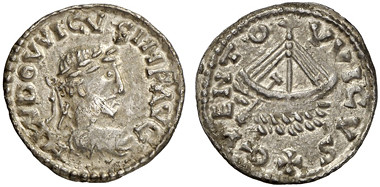
Earlier image: Denarius with portrait of Louis the Pious (814-840)
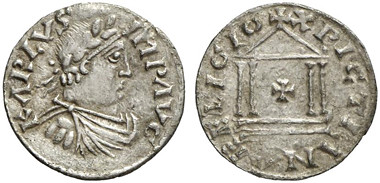
Corrected image: Denarius with portrait of Charlemagne (768-814)
To read the earlier E-Sylum article, see: CHARLEMAGNE, SWITZERLAND, AND NUMISMATICS (www.coinbooks.org/esylum_v16n40a18.html)
On the Goetz Reprints
David Ganz writes:
The new Goetz books are not exact reprints -- at least not on the covers, or the title pages inside, which use "Karl X. Goetz" to distinguish them from the originals.
Publisher Scott Goodman adds:
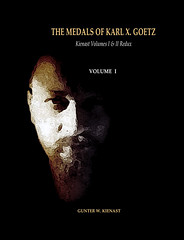 The interior content from Kienast's Title Page to the end of each book is the same as the original publications. The point I was trying to get across by stating 'exact' was to alleviate anyone purchasing the set of books thinking there was new information added to them prior to their printing.
The interior content from Kienast's Title Page to the end of each book is the same as the original publications. The point I was trying to get across by stating 'exact' was to alleviate anyone purchasing the set of books thinking there was new information added to them prior to their printing.
To read the earlier E-Sylum article, see:
NEW BOOKS: THE MEDALS OF KARL X. GOETZ
(www.coinbooks.org/esylum_v16n38a02.html)
More on the British Museum Viking Exhibit
Ursula Kampmann writes:
If readers want to see some spectacular pictures of the new exhibition in the British Museum, which was first in Copenhagen, click here: www.coinsweekly.com/en/The-Vikings-and-their-ships/4?&id=2104
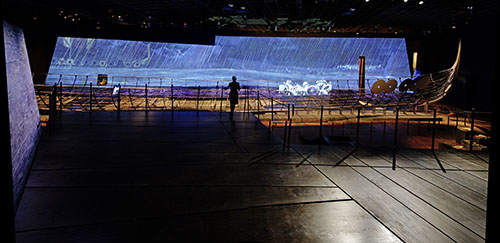
To read the earlier E-Sylum article, see: BRITISH MUSEUM VIKING EXHIBIT INCLUDES COINS (www.coinbooks.org/esylum_v16n40a22.html)
PEALE'S PHILADELPHIA MUSEUM PASS TOKEN NO. 1
A good amount of numismatic information travels through my inbox. It all starts with the U.S. mail, with a wide array of coin club journals, auction catalogs, book purchases, and the like coming in almost daily.
Beyond the snail mail, there is virtually unlimited information coming in over the Internet.
All of this can be overwhelming, and there is no way for one person to get through it all. This is where the network comes in. Three eyes are better than two, and three hundred are better still. I have always favored collaboration over competition, and unless you are collecting finest knowns (that game has its own set of rules), you may be missing out on the collecting experience if you aren't plugged into like-minded numismatists. "Numismatics is the magnetism that pulls needles of haystacks" is how Eric Newman put it, and as we all pull together, the magnet gets stronger.
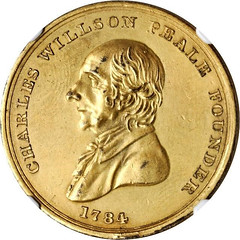
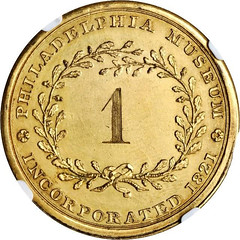
Last month, I mentioned an ANA purchase - pictured here - this is a token engraved by Christian Gobrecht, used as a pass to Peale's Museum in Philadelphia in the 1820s. This particular piece is copper, gilt in gold. As can plainly be seen, it is numbered "#1," numbered examples are known to the extent of about fifty, and are thought to have been assigned to particular individuals. Named examples are also known, with the recipient's name engraved within the wreath, in place of a specific number. I showed the piece around at the ANA to a number of collectors who take interest in such things.
Fast forward a few weeks. My long time collaborator, Joel Orosz, while looking for something else, stumbled upon the following in an 1859 Edward Cogan auction catalog:
And with that, we now have a provenance for this piece. Cogan was selling the Levick collection, which is even better as Levick was not some faceless 19th century numismatist, but instead well known as a collector and researcher of large cents. It is highly unlikely I would have found this information on my own, but with multiple researchers aware of my interest in Gobrechtiana, the odds get better.
Naturally, I had to share some smack with my auction agent, John Kraljevich, who commented "This is awesome news. I hereby revoke title and demand Len sell it back to me at a large profit!" John may have to wait awhile for that. In the meantime let's keep working the books and sharing information as opportunity presents.
For more information on the Liberty Seated Collectors Club, see: www.lsccweb.org

ON THE LEGALITY OF USING CANCELLED MINT DIES

Is it legal to produce numismatic items with X-canceled U.S. dies?
The Regency Mint in Orem, Utah, is striking medals from an X-canceled U.S. Mint 1995 commemorative die for the 1996 Atlanta Centennial Olympic Games program. In 1997 the Mint sold around 2,700 dies for silver dollars and gold $5 half eagles to collectors in just two weeks.
When these dies entered the marketplace, some hobbyists voiced concern that the X-canceled dies would be used to strike fake error coins for sale to an unsuspecting public. That threat never materialized.
At the time, the Mint considered the foray into selling X-canceled dies as a test. Later the Mint sold coin dies directly to the public, but the dies were entirely defaced with no designs remaining. The Mint has not since sold X-canceled dies.
Today, these Atlanta Centennial Olympic X-canceled dies, which were initially sold to collectors for $49, have seen a robust aftermarket with dies selling online at the $750 to $1,000 level.
But is it legal to use the dies to strike medals as the Regency Mint is doing? Isn’t the purpose of the cancellation so that the dies can’t be used again?
Although it is clear that it is legal to possess these dies since they were sold directly by the U.S. Mint, do strikes from these dies have the potential to confuse the public to the point where they’re considered counterfeits? Likely not.
It would seem that the legality depends in part on the Regency Mint’s intent, which is not to create counterfeit coins but to use dies to produce medals. One might even say that it’s a logical next step for these X-canceled dies.
There’s no denomination on them and the reverse clearly states that they were struck from a canceled U.S. Mint die. That some examples are ringed-bimetallic further reduces the likelihood of confusion that buyers would confuse these medals for an official U.S. Mint product.
To read the complete articles, see:
Private mint uses Olympic silver dollar die to strike medals
(www.coinworld.com/articles/private-mint-uses-olympic-silver-dollar-die-t)
X-canceled Atlanta Olympic coin dies get a new second life
(www.coinworld.com/articles/x-canceled-atlanta-olympic-coin-dies-get-a-ne)
To read the earlier E-Sylum article, see: MEDALS STRUCK WITH CANCELLED 1995 OLYMPIC DOLLAR DIE (www.coinbooks.org/esylum_v16n38a19.html)
QUERY: INDEX FOR NUMISMATIC NEWS, WORLD COIN NEWS SOUGHT
Serge Pelletier writes:
Well, after so many years of writing, I have decided to go back to school to get a degree in writing and translation. I met with the dean to discuss getting credit for what I have done over the year. At the end of our meeting, she asked me to provide, in my portfolio, a list of what I have written over the years. While I have no problem with recent material, because I have electronic copies, I do have problems with material prior to 2004 especially that published in World Coin News and Numismatic News.
Does anyone know of a database I can search or would be willing to help me? Unfortunately, my military career got me to move around a lot and I could not afford to move mountain of papers, so I had to dispose of my copies of those publications.
Well, the Numismatic Indexes Project (NIP) index hasn't been updated in years, and it doesn't include those publications. I found only one reference to Serge's name in NIP:
- CANADA--TOKENS. --announcement of publication Canadian municipal trade dollars ANA Vol.97 1984 DEC 2492 Serge Pelletier
I tried the search feature on Numismaster.com, but I don't believe their index goes back further than the sites creation. I found these articles by Serge or including Serge's name:
-
August 2012
- French Book Has Historical Merit Aug 27 - Serge Pelletier, World Coin News
- Royal Canadian Numismatic Association Convention a Success Aug 13 - Serge Pelletier, World Coin News
-
May 2010
- Canadian Clubs Form Coalition May 26 - World Coin News
- French Guide Now in 19th Edition May 05 - Serge Pelletier, World Coin News
-
March 2010
- France Continues to Wow With 2010 Collection Mar 15 - Serge Pelletier, World Coin News
-
March 2009
- Local Scrip Answer to Weak Economy? Mar 02 - Richard Giedroyc, World Coin News
-
August 2008
- Landmark CNA Convention 'Huge Success' Aug 15 - Doug Andrews, World Coin News
-
July 2008
- Bennett, Million Dollar Coin to Make Appearances at CNA Convention Jul 08 - Maggie Pahl, Market Update
So - can anyone help Serge continue his article search? Thanks.
To visit Numismaster, see:
www.numismaster.com
To visit the NIP index, see:
nip.money.org
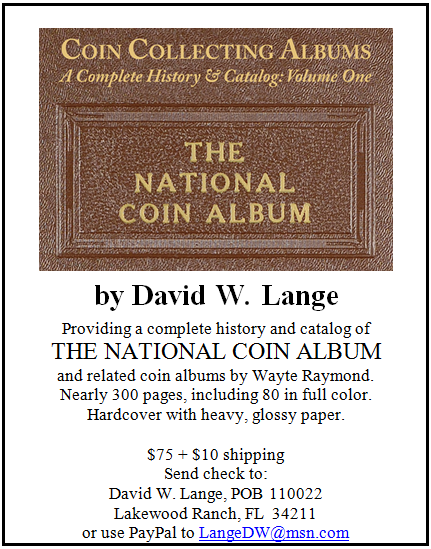
HARVEY STACK ON THE JAMES STACK COLLECTION, PART 2
 In the quarter series he owned outstanding early dates such as 1796, an 1804 in Mint State, together with the early dates before 1807, the Capped Bust series from 1818 to 1825 in Mint State. In Proof he had 1827 and 1842 Small Date. He had virtually all the Liberty Seated quarters in Mint State including 1871-CC. 1873-CC No Arrows, 1878-S and 1891-O to mention a few. He also had a full set of Barber coinage in Mint State and /or Proof, as well as the Standing Liberty coins. It was a super collection to have.
In the quarter series he owned outstanding early dates such as 1796, an 1804 in Mint State, together with the early dates before 1807, the Capped Bust series from 1818 to 1825 in Mint State. In Proof he had 1827 and 1842 Small Date. He had virtually all the Liberty Seated quarters in Mint State including 1871-CC. 1873-CC No Arrows, 1878-S and 1891-O to mention a few. He also had a full set of Barber coinage in Mint State and /or Proof, as well as the Standing Liberty coins. It was a super collection to have.
In the half dollar series he had numerous early Bust types starting with 1794 and highlighted by the 1796 15 Star half dollar Proof from the H.R. Lee Collection. He also had most dates and varieties from 1807-1836, primarily in Mint State, in the Capped Bust Reeded Edge series in Mint State, including the W.W. Neil 1838-O Proof. The Liberty Seated series was virtually complete with early Proofs and Mint State examples highlighted by the 1861-O in Proof, the rare Carson City issues in Mint State, a 1878-S in Superb Mint State, prooflike,
All the Barber series half-dollars were Mint State or Proof, including the famous Atwater specimen of the 1892-O' Microscopic O in Gem Mint State. To round out the half dollar series Mr. Stack had a sharply struck set of Liberty Walking half dollars.
I was one of the lucky dealers who knew Jim personally, since I was around the Stack's shop during his very spirited collecting days. I also met his son, James, who took over the collection his father formed, and for years consigned sections to our family for sale. The tradition carried forward and I am surely proud to have known the entire family for so many decades.
To read the complete article, see: Remember When: The James A. Stack Collection, Part 2 (stacksbowers.com/Blogs/remember-when-james-stack-collection.html)
To read the earlier E-Sylum article, see: HARVEY STACK ON THE JAMES STACK COLLECTION, PART 1 (www.coinbooks.org/esylum_v16n40a14.html)
A CANADIAN CENT OVERSTRIKE ERROR
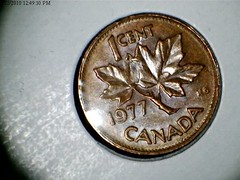

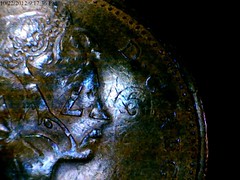

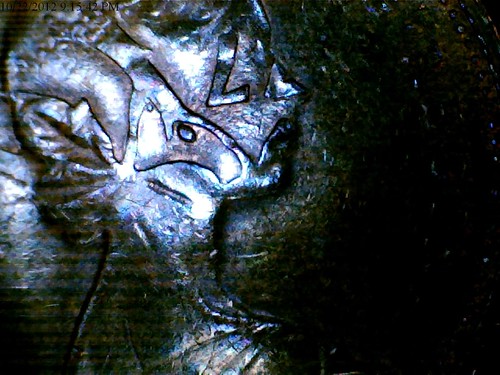
THE BOOK BAZARRE
MORE RESEARCH ON THE COIN COLLECTORS KLINE
Joel Orosz writes:
I was delighted to read that John N. Lupia III has tackled the question of whether John W. Kline and A.C. Kline were--in terms of numismatic business, at least--one and the same person. Kudos to Prof. Lupia for proving what was previously a statement by Emmanuel Joseph Attinelli, that John W. Kline's wife was A.C. Kline. One mystery finally--and definitively--solved!
Next to chime in was genealogical researcher Kay Olson Freeman. See writes:
- Adelia C. Kline was John W. Kline's wife's - thus she is "A.C. Kline."
- Adelia C. was born @ 1825 in Philadelphia.
- She died Sept. 21, 1899, age 74, at the Presbyterian Home. She was a widow.
- She is "Adelia C. Kline" on her death cert and newspaper notice and census.
- Adelia C. and John W. Kline were married in the 1860 Census.
-
In 1860, Adelia and John were residing with those who could be her parents - and they are all buried together in the same plot, Woodlands Cemetery.
Adelia C. was probably/ possibly? the daughter of:
-
Father: Urban Lynch (b.1804, Phila. - d. Nov. 25, 1879, Phila, age 75). Urban Lynch was a cabinetmaker.
- Mother: Isabella C. Lynch (b. 1804, Phila - d. Feb. 14, 1874, Phila, age 70). Funeral Old Pine St. (Presbyterian) Church.
- It is notable that the Lynch residence was 406 Prune - which became 406 Locust when Philadelphia changed names of streets.
- 406 Prune/Locust was also the address of "A.C. Kline" and John W. Kline.
- John William Kline is very difficult to find in US Census - sometimes name is William Cline.
- And perhaps Urban and Isabella C. Lynch were associated with Kline in some other way.
- 1881 to @1884, JW Kline is supervising Wanamaker's reproduction antique furniture dept.
- JW Kline's last address in 1892: Curiosities, 31 South 17th St. Home: 2585 Columbia Ave. [now Cecil B. Moore Ave.]
- JW Kline's April 6, 1892 death record (age 70) gives his occupation as "clerk." He is married.
- JW Kline's April 1892 funeral was said to be at cousin's home 1010 North 5th St. That is address of Kline's undertaker, Samuel W. Kehr. Was Kehr (b. @ 1837, PA), Kline's cousin too?
- Sept. 21, 1893, there was a sale of JW Kline's books and engravings by Davis & Harvey, Philadelphia.
Joel Orosz writes:
This is very useful information, proving once and for all that "A.C. Kline" fits the name of John W. Kline's wife. It is also significant that Adelia's parents lived at 406 Prune/Locust--it may suggest that the Klines' enterprises were not terribly lucrative--so they lived with her parents.
John Lupia writes:
The point I was making is that the 1855 coin auction of A. C. Kline was in no way John W. Kline or his wife A. C. Kline.
I was trying to find another A. C. Kline, the real one, to identify as the owner of the coins at auction in 1855, also the store owner in 1857 and philatelic and numismatic publisher in 1860, which seemed to me to be one person. The only one I could find was the one I cited aged 79.
So if this 79 year old A. C. Kline was not the owner of the auction in 1855 and had a curio shop in 1857 and published widely in 1860 then who was he? He is cited in the directory as someone different than J. William Kline. There obviously must be another A. C. Kline, a man living in Philadelphia during the 1850's through 1860's who started the business whom John W. Kline was related to, as the documents suggest.
Joel Orosz writes:
Given the evidence presented in Prof. Lupia's Encyclopedic Dictionary of Numismatic Biographies, I respectfully disagree, however, with his thesis that there was in Philadelphia contemporaneously with John W. Kline and his wife A.C. Kline another A.C. Kline, John W.'s uncle (1791-1870?), who was responsible for creating and selling the Kline collection auctioned in Philadelphia on June 12-13, 1855; starting a coin dealership ca. 1857; publishing the first (plagiarized) philatelic catalog in the U.S; reprinting a number of numismatic works during the 1860s, and whose identity John W. Kline expropriated about 1870 to make John W. appear more numismatically important than he really was.
Prof. Lupia bases his theory upon the following: "In McElroy's Philadelphia Directory for 1861, there are two listings: A.C. Kline: Stationery, etc. 824 Walnut. H. 406 Prune; and J. William Kline: Periodicals, 406 Prune, clearly revealing that these are two different men and that J.W. Kline is a relative of A.C. Kline, most probably his nephew."
I agree that this is one potentially valid interpretation of the data from McElroy's. Another potentially valid interpretation is that A.C. Kline was John W. Kline's wife, and that the couple owned two businesses, one located at 824 Walnut, and the other run from their home at 406 Prune. There are other potentially valid interpretations of this data, as well.
Prof. Lupia goes on to say that "On October 19, 1870, the John W. Kline collection of 377 lots was sold at Bangs, Merwin & Co., New York. This appears to be the time when John W. Kline took over his uncle's business and had his wife go by the same initials A. C. Kline as though he were the company founder and publisher from the beginning."
The first mention of the Kline collection sale of June 1855 in a numismatic journal, in the October, 1868 issue of The American Journal of Numismatics, written by the (then) Philadelphia numismatist J.N.T Levick, referred to it as the "....John W. Kline (believed by most to be A.C. Kline) Sale in 1855..." (p. 47). This might be read more than one way, but in the table accompanying Levick's article, the first entry is: "Kline, Jno. W., Phila. (known as the A.C. Kline sale)." Quite clearly, Levick believed that John W. Kline was the creator and seller of the 1855 Kline collection. And Levick wrote this two years before Prof. Lupia says that John W. Kline began to claim credit for A.C. Kline's work.
In 1876, in Numisgraphics, Emmanuel Joseph Attinelli--as Prof. Lupia notes--provided a short biography of John W. Kline on p. 60. Attinelli stated: "Old coins and medals naturally attracted his attention, and his well known cabinet was sold in June 1855. Since that time he has been interested in quite a number of sales, some of them (in consequence, probably of pecuniary troubles), under the name of his wife Mrs. A. C. Kline."
The December 1880 issue of Mason's Coin Collectors Herald contained, on p. 22, the punning headline: "Coin Business Declined." The text underneath read: "A.C. Kline, who with Edward Cogan and E. Mason, Jr. formed the three coin dealers in 1860, in this city, has stepped 'down and out' and his well known shop on 13th Street is closed. Alas for "Wm. John," alias A.C.K.," who might have been at the head and front, if--concluded in our next." The next issue was March 1881, and Mason said not a word in it about Kline. However, it is worth noting that Mason referred to Kline as "A.C. Kline" in 1880, ten years after Prof. Lupia estimates that "Uncle A.C. Kline" died.
When S. H. and Henry Chapman sold The Stock of Postage Stamps of the Late John W. Kline, April 13-14, 1896, They began by saying "The late John W. Kline was one of the first dealers in postage stamps in America...."
Both Levick and Mason were active participants in the Philadelphia coin and stamp scene, as avid collectors from the mid-1850s, and in Mason's case, as a dealer starting in 1860. Both clearly believed that John W. Kline owned the 1855 Kline collection, and was a coin dealer active as early as 1860. Neither mentioned another man named A. C. Kline in these connections. Mason does mention A.C. Kline--but only as John W.'s alias--or more politely, as John W.'s trade style.
Attinelli and the Chapman Brothers were not in a position to personally know the Philadelphia coin and stamp scene of the 1850s and early 1860s, but Attinelli was correct about the identity of John W.'s wife, and neither Attinelli nor the Chapmans said anything inconsistent with the men who were on the spot at the time, Levick and Mason.
It is always possible, of course, that Prof. Lupia, or another researcher, will find compelling evidence that contradicts these accounts, but, as the evidence now stands, the testimony of those who were there indicates that John W. Kline and A.C. Kline were both trade styles for John W. Kline, and while A.C. was John W.'s wife, numismatically, they were the same person. In any case, Prof. Lupia is to be commended for presenting his theory--it is only through discussions such as those it has stimulated that our understanding is increased, and the full truth will ultimately emerge.
Joel Orosz writes:
The 1855 sale was John W. Kline's collection, based both on the recollection of J.N.T. Levick, whom I already mentioned, and also on this new piece of evidence. I have attached a note in the hand of Winslow J. Howard of New York City (later of New Mexico), who attended the 1855 sale in Philadelphia. This note is bound into Howard's copy of the June 12-13, 1855 sale. As you can see from the note, he specifically identified the coins in the 1855 sale as the John W. Kline collection. Although Howard was off by six days as to the sale date, he was there and all of us were not, so his eyewitness testimony must be considered definitive.
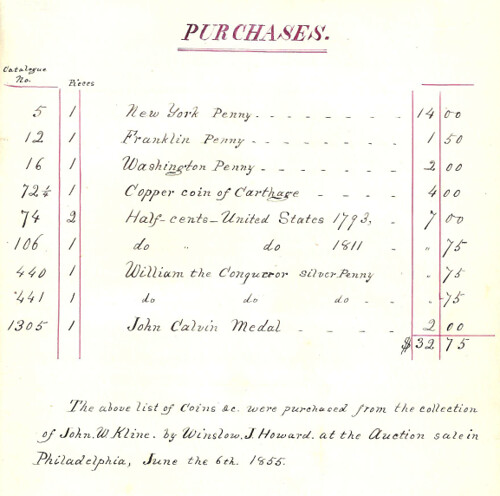
John Lupia writes:
The note attachment regarding Winslow J. Howard proves nothing since it could easily have been drawn up post October 1868 and influenced by Levick's AJN report. I have made necessary changes to the John W. Kline bio on my website.
From the updated bio:
So who was the owner of that coin collection sold in June 1855? Was it really “A. C. Kline” published on the title page of the printed catalogue? Was a local dealer by the name A.C. Kline taking orders for bids at the sale published on that title page? I have never seen the catalogue but get the gist from Turner & Trenchard that no name of any owner appears on it. This is something very typical. The first identification of the owner as a person named Kline was found in lot 635 "Kline's June 1855 Thomas Birch & Sons" coin auction sale found in a collection of 690 lots sold through Thomas Birch & Co., on April 16, 1866. The auction catalogue typically does not give the name of the consignor on it also. Two coin dealers are listed on the front cover of that 1866 auction catalogue taking orders, i.e., bids for the sale, A. C. Kline and C. K. Warner. This coin auction sale is never mentioned in the list of coin auction catalogues published by Daniel Parish, Jr. in 1866. The identity of the consignor of this 1866 sale was given by Attinelli in 1876 as A. C. Kline and that identification appears to be very reasonable and tenable. The question is, whom was Mrs. Kline identifying as the owner of the June 1855 coin auction sale when she wrote the description in lot 635. "Kline's June 1855? Was she referring to herself, her husband, her father-in-law, a completely different Kline unrelated or a distant relative, who? Or was she pirating the identity as she has so skillfully pirated so many other works several years earlier? Daniel Parish, Jr. owner of the largest collection of coin auction catalogues in the United States had identified this person four months later as F. J. Kline in his list as entry #15 published in 1866.
...
It is not clear who the owner of the coin and medal collection was comprising an extensive assortment of 1,854 lots of American coins, in a public auction on June 12, 1855, at the auction house of Moses Thomas & Sons, Philadelphia, Pennsylvania, realizing a total of $2,062.80. The question arises “How could either Adelia C. Kline or her husband John William Kline have amassed such a valuable collection of Siege pieces, foreign and American coins and medals, foreign and American gold and numismatic literature for “the largest coin auction held in the United States up to that time [? my question]. . . . Although Kline’s name is not mentioned in the catalogue, Attinelli states that “A. C. Kline” was the owner.” (Trenchard & Turner, 27).
To read the complete updated article on John's web site, see: KLINE, Jr., JOHN WILLIAM (sites.google.com/site/numismaticmallcom/encyclopedic-dictionary-of-numismatic-biographies/kline-john-william)
To read the complete article, see: NEW RESEARCH ON THE COIN COLLECTORS KLINE (www.coinbooks.org/esylum_v16n40a16.html)
THE BOOK BAZARRE
COINS, TOKENS AND MEDALS WITH IMAGES OF BOOKS
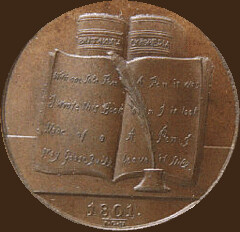
Warwickshire Coventry Conder Token
"Conder" token, Warwickshire Coventry, DH-44 listed in Dalton & Hamer page 266.
Courtesy of David Sklow.
To visit Dave's web site, see:
www.finenumismaticbooks.com
Armenian Book Printing Coin
George Cuhaj writes:
Here is a recent NCLT from Armenia featuring books.

Louis Braille Bicentennial Dollar
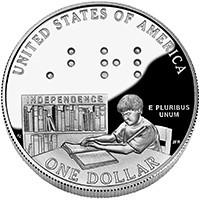 Greg Adams writes:
Greg Adams writes:
How about this one from 2009 (Louis Braille Bicentennial)
State Quarters With Images of Books
Mark Borckardt writes:
A couple honorable mentions for the list of coins depicting books:
- The Alabama state quarter depicts Helen Keller with a braille book
- The Tennessee state quarter depicts a musical score
2012 American Platinum Eagle
Dennis Tucker writes:
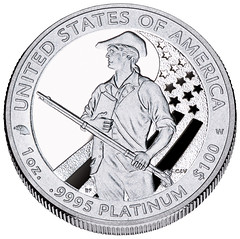 The 2012 one-ounce Proof American Platinum Eagle has a book in its design. To quote the U.S. Mint’s literature: “It depicts a vigilant minuteman from the Revolutionary War, representing the protection and defense of the country during its early days. The minuteman carries a rifle and a book, which symbolizes the importance of knowledge in defending our Nation.”
The 2012 one-ounce Proof American Platinum Eagle has a book in its design. To quote the U.S. Mint’s literature: “It depicts a vigilant minuteman from the Revolutionary War, representing the protection and defense of the country during its early days. The minuteman carries a rifle and a book, which symbolizes the importance of knowledge in defending our Nation.”
This coin is featured in Ed Moy’s upcoming American Gold and Platinum Eagles --- a coin with a book within a book about coins. It makes one’s head spin!
Some Ancient Showing Books
Ed Hohertz writes:
 A nice question that did not pique my interest until I saw the answers – all the examples given are relatively modern coins. So to look at some older ones, try Justinian II (Byzantine Empire, 685-695 A.D.) with Christ holding the book of the Gospels .
A nice question that did not pique my interest until I saw the answers – all the examples given are relatively modern coins. So to look at some older ones, try Justinian II (Byzantine Empire, 685-695 A.D.) with Christ holding the book of the Gospels .
 The predecessors of books are scrolls, and we find an end view of a scroll in the Ark of the Covenant on a Jewish coin of the Bar Kochba revolt (132-135 A.D.) .
The predecessors of books are scrolls, and we find an end view of a scroll in the Ark of the Covenant on a Jewish coin of the Bar Kochba revolt (132-135 A.D.) .
 Before that is a nice Roman Republic denarius with Clio, the Muse of History, holding an open scroll (56 B.C.) .
Before that is a nice Roman Republic denarius with Clio, the Muse of History, holding an open scroll (56 B.C.) .
 As an example of Greek coinage there is Homer holding a scroll in his left hand (Ionia, Kolophon, 50 B.C.) .
As an example of Greek coinage there is Homer holding a scroll in his left hand (Ionia, Kolophon, 50 B.C.) .
 Finally, to go further back in time is this Greek coin from Syracuse, Sicily, with a female holding a scroll (216-215 B.C.) .
Finally, to go further back in time is this Greek coin from Syracuse, Sicily, with a female holding a scroll (216-215 B.C.) .
Photos are courtesy of Classical Numismatic Group, Inc.
To visit the CNG web site, see: www.cngcoins.com
Medals with Books
John Sallay writes:
In response to the query in the last couple editions of the E-Sylum regarding books on coins, I can’t help but point out that there are easily several hundred, if not a few thousand medals with books included in the main devices. As a collector of school award medals, I must have at least a couple of hundred such medals myself.
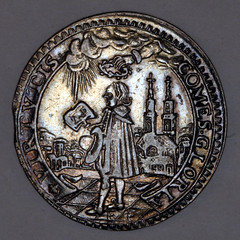
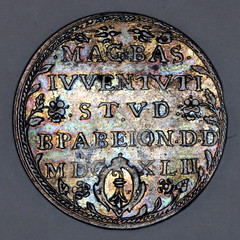
The earliest medal showing a book that I’m aware of is the 1642 silver school prize medal from Basel, Switzerland (M&H 39, Leu 1122). The obverse shows a full length figure of a boy who is reading an open book, while he is being crowned with a laurel wreath by an arm reaching down from the clouds above. The legend VIRTUTIS COMES GLORIA roughly translates as “Fame is a companion of virtue”.

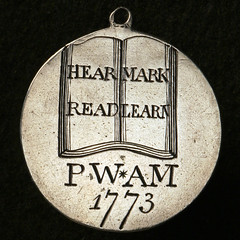
The earliest medal that I know of showing only a book as the device is the Christ’s Hospital (London) markers’ medals, which were issued for several decades to the school monitors beginning in 1755 (Grimshaw 1981, #89). The reverse shows an open Bible with the inscription “HEAR READ MARK LEARN”, with the initials of the headmaster and date.
This phrase is taken from the Anglican Book of Common Prayer (Collect for the Second Sunday of Advent), “BLESSED Lord, who hast caused all holy Scriptures to be written for our learning; Grant that we may in such wise hear them, read, mark, learn, and inwardly digest them…” I certainly don’t mean to compare any numismatic book to the Holy Bible, but perhaps this motto can be appreciated by even the most agnostic numismatic bibliomaniac as it may relate to books generally. Well…maybe not the “mark” part!
To read the earlier E-Sylum article, see: MORE COINS WITH IMAGES OF BOOKS (www.coinbooks.org/esylum_v16n40a17.html)
ARTICLE HIGHLIGHTS CARSON CITY MINT HISTORY
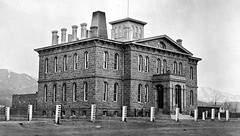 Carson City is only one of seven cities in the past 200 years to be home to a United States Mint. Compared to metropolises such as Philadelphia, San Francisco and Denver, Carson City, located in northern Nevada, seemed both tiny and in the middle of nowhere. But it had something that the other cities didn’t have — it was sitting next to the Comstock Lode.
Carson City is only one of seven cities in the past 200 years to be home to a United States Mint. Compared to metropolises such as Philadelphia, San Francisco and Denver, Carson City, located in northern Nevada, seemed both tiny and in the middle of nowhere. But it had something that the other cities didn’t have — it was sitting next to the Comstock Lode.
The Comstock Lode was the first major discovery of silver ore in the United States. After prospectors stumbled on the massive deposits of silver, the media swept in and kicked off a “Silver Rush” to the area just 11 years after the initial California Gold Rush. Fortunes were made in the fields and lost in the saloons as the rough-and-ready mining camps mushroomed into cities built on the fabulous wealth of the lucky few.
Although Congress established the Carson City Mint in 1863, the Civil War delayed its construction until 1866. As the impressive sandstone edifice was completed in late 1869, President Ulysses S. Grant named Abraham Curry, the founder and chief proponent of Carson City, as the mint’s first superintendent. Minting began in 1870, just six years after Nevada became the 36th state, and by the end of that year, Curry had supervised the production of nearly 100,00 gold and silver coins that all bore the new “CC” mark.
Over the next quarter-decade, the Carson City mint coined more than $49 million worth of gold coins and silver coins, including the $20 Double Eagle, the $10 Gold Eagle, and the $5 Half Eagle. In addition, the famed Morgan silver dollar, half-dollars, quarters, 20-cent pieces and dimes were also minted from the silver mined at the Comstock. In fact, the most valuable coin minted at Carson City is the only known surviving dime from an 1873 run of just over 12,000. Today, it’s worth about $3.5 million.
By the late-1890s, the silver boom was over and mining dramatically decreased at the Comstock, leading to the withdrawal of the Carson City U.S. Mint's formal mint status in 1899. After being in danger of demolition for a number of years, the beautiful sandstone building was purchased by the state and remodeled to serve as the Nevada State Museum in 1941.
The mint's Press No. 1 still resides at the museum, and visitors can see it in operation on the last Friday of each month.
To read the complete article, see: Why the Carson City Mint Was Abandoned (www.kirotv.com/news/lifestyles/why-carson-city-mint-was-abandoned/nbBm5/)
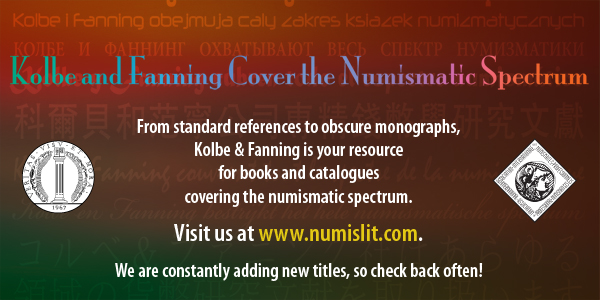
SS CENTRAL AMERICA RECOVERY EFFORTS COULD RESUME IN 2014
The hunt for treasure from the shipwrecked SS Central America could resume next summer, a report filed with Franklin County Common Pleas Court says.
The effort would be spearheaded by Ira O. Kane, the court-appointed receiver for Thompson’s defunct partnership. And his plans are ambitious.
Kane asked the court last week to approve a plan to either recover the “down treasure” next summer or sell off the right to recover it.
“Based on credible historical evidence, our research experts have determined that there remain sufficient amounts of down treasure in the S.S. Central America and its debris field to justify a further recovery effort,” Kane wrote in the report.
The experts, he wrote, believe the majority of the remaining treasure “will be comprised of gold coins and ingots.”
The research experts that Kane has hired include Blue Water Recoveries Ltd., a British deep-sea-operations company specializing in locating historic shipwrecks; Robert D. Evans, Thompson’s chief scientist; and Craig Mullen, a former Navy diver who directs deep-sea recovery efforts.
Mullen, of Key Largo, Fla., directed the recovery of the space shuttle Challenger in 1986 and has recovered several large airplanes and shipwrecks from the ocean.
Kane said yesterday that the next step is to gather enough information to decide what’s in the best interest of investors and make a recommendation to the court. The cost of recovering the treasure hasn’t been determined, he said.
The report lists a timeline of proposed actions, including finding new investors by early next year and recovering the down treasure by next October.
“We haven’t made any effort to solicit additional financing,” Kane said yesterday. “At the end of the day, you need a certain type of investor who’s not afraid of risk.”
To read the complete article, see: Shipwreck treasure-recovery efforts could resume in 2014 (www.dispatch.com/content/stories/local/2013/10/05/shipwreck-treasure-recovery-efforts-could-resume-in-2014.html)
NUMISMATIC SURVEY OF EGYPT AND ALEXANDRIA, PART I
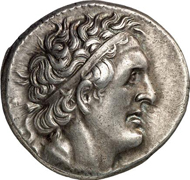
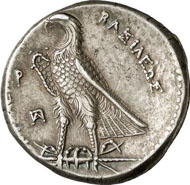
EGYPT. Ptolemy I, 305-282. Tetradrachm
Egypt was a country where it was easy to monitor foreign dealers entering and leaving the country. Only few ports were located in the marshy Nile River delta where it was easy for a cargo vessel to anchor. In the west and the east, the desert prevented trade caravans from passing through. Thus, everyone aiming at acquiring grain or the precious works of the craftsmen was forced to enter the country through one of its official borders – and that was pretty unique in ancient times.
It enabled the ruler of Egypt not only to monitor entry but also to control the circulation of money. Ptolemy I had been the first to realize what big chance Egypt, this special case, provided to levy a tax without attracting attention. He made his mints struck tetradrachms that were underweight compared with the other tetradrachms that was produced for commercial purposes.
Anyone who entered his empire was obliged to convert his own coins into Egyptian ones, in a ratio 1:1. That brought the ruler a nice earning, a kind of turnover tax that made the rulers of this country rich for hundreds of years simply because Egypt was the most important country of exportation in the ancient world.
The basic rule was: the one who ruled Egypt was rich. He was not only rich, but so rich that none of the dignified fathers in the Roman senate thought one of their colleagues capable of dealing responsibly with this wealth. That was said to be the reason why the Romans were reluctant to annex the weak empire at the Nile River.
It was Augustus who finally captured Egypt after the Battle of Actium in 31. B. C. After his victory over the Egyptian navy and the troops of Marc Antony, he advanced on Alexandria, marching at the forefront of his soldiers. On 1st August of the following year, he annihilated the last remains of Marc Antony’s forces. The rest is well-known. Egypt was conquered. Marc Antony and Cleopatra committed suicide.
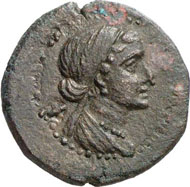
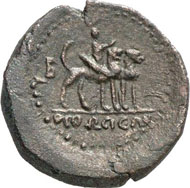
CYPRUS. Cleopatra VII, 50-31. AE, 36/5, Orthosia. RPC 4501.
To read the complete article, see: Egypt and Alexandria. A brief numismatic survey: part I (www.coinsweekly.com/en/Egypt-and-Alexandria-A-brief-numismatic-survey-part-I/8?&id=336&type=a)
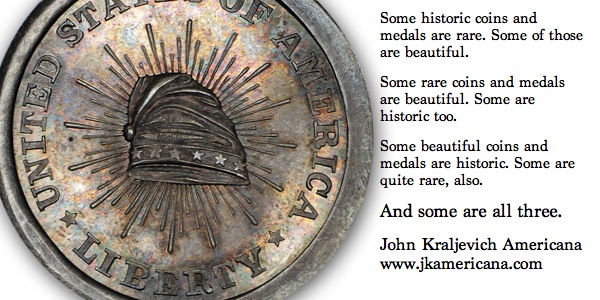
A VISIT TO COLONIAL WILLIAMSBURG'S NUMISMATIC EXHIBITS
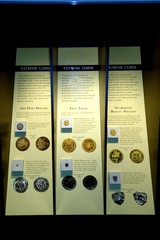
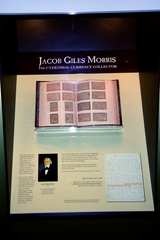
Housed in the DeWitt Wallace Decorative Arts Museum in Colonial Williamsburg are numismatic gems in the world of colonial coinage, medals and currency. The exhibit "Dollars, Farthings & Fables" brings to life the currency and coins that were driving a young nation. These tangible assets from a distant past are displayed in a style that is both interesting and enlightening to all visitors of the museum.
Since he was a boy, Curator Mr. Erik Goldstein was obsessed with the American Revolution while simultaneously being a coin collector. Therefore, it was only natural that he began to study colonial currency and early American coinage. He prefers "coins with history" over pristine examples that have never had a life outside of a museum's coin cabinet. One of his favorite examples of this principle is a Virginia halfpenny that was unearthed on the grounds of the Governor's Palace at Williamsburg. By no means is it an unspoiled specimen, but if it could talk it would have a story to tell that would keep us spellbound for hours.
"Dollars, Farthings & Fables"
The numismatic exhibit is a fun exploration of coins and currency in early Colonial America. The display explores the "first, biggest, prettiest, ugliest, busted myths and personalities" in colonial coins and currency. The exhibit guides visitors on a journey from colonial times to the beginnings of our new nation. Examples of wampum and "hoe" money that were traded with the early American Indians before coins arrived on our continent from other countries are on exhibit. Some of the other items you can see on display include a 1724 Brazilian 20,000 Reis gold coin, English farthing, 1652 Massachusetts "NE" Shilling, 1776 American Continental Dollar, gold doubloons, silver "pieces of eight", and a 1783 "Libertas Americana" silver medal brought back from France by Benjamin Franklin.
The Cornell Paper Money Hoard
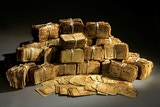 One of the most impressive displays is the Cornell Paper Money Hoard. This hoard of North Carolina colonial paper money was assembled by Samuel Cornell, a merchant and currency speculator in the period right before the Revolution. While not the entire hoard, this portion contains about 4,200 notes from the original 6,700 notes and represents about 4% of that colony's total output of paper money during the period from 1748 until 1771.
One of the most impressive displays is the Cornell Paper Money Hoard. This hoard of North Carolina colonial paper money was assembled by Samuel Cornell, a merchant and currency speculator in the period right before the Revolution. While not the entire hoard, this portion contains about 4,200 notes from the original 6,700 notes and represents about 4% of that colony's total output of paper money during the period from 1748 until 1771.
The Jacob Giles Morris Collection
Another remarkable collection is the Jacob Giles Morris Collection of colonial paper money. The collection is still in its original leather bound album that was assembled by Morris until his death in 1854. It was donated by his heirs to the Colonial Williamsburg Foundation in 2004. It is an almost complete date and denomination set of colonial currency that consists of 340 notes.
To read the complete articles, see:
Colonial Coins at Williamsburg, Virginia
(coins.about.com/b/2013/10/01/colonial-coins-at-williamsburg-virginia.htm?nl=1)
Colonial Williamsburg's Collection Of Coins, Medals, and Currency
(coins.about.com/od/famousrarecoinprofiles/a/Colonial-Williamsburg-Collection-Of-Coins-Medals-And-Currency.htm)
SOME INTERESTING MEDALS: OCTOBER 6, 2013

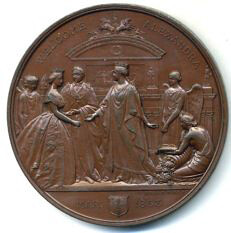
ENTRY OF PRINCESS ALEXANDRA INTO THE CITY OF LONDON, 1863.
BHM 2783, Welch 9, Eimer 1561. 77mm. Bronze. J.S. and A.B. Wyon, Sc. About Uncirculated with a few scattered field marks. Obverse: Bare head of the Princess facing left, ALEXANDRA above. WELCOME ALEXANDRA above a scene of Londinia welcoming the Princess who is led by the Price of Wales. Winged angels flank the three figures while a kneeling figure of a servant with a cornucopia is shown to the right. MAR. arms of London 1863 in the exergue. 350
specimens struck. $250.00
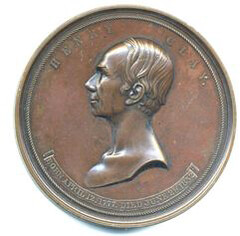
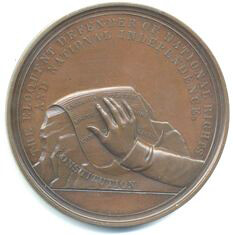
HENRY CLAY ELOQUENT DEFENDER MEDAL
.
PE-8; Marqusee 403. 76.5mm. Copper, bronzed. C.C.Wright, Sc. Choice About Uncirculated with a few light field scratches. Obverse: Wright’s particularly fine naked bust portrait of Clay to the left. Rx: Clay’s hand in placed over a piece of paper insc. CONSTITUTION. Legend: THE ELOQUENT DEFENDER OF NATIONAL RIGHTS AND NATIONAL INDEPENDENCE.
There are two obverse varieties of this medal; one with a curving C.C.WRIGHT F. signature below the bust and the other with no signature at all. The example offered here is the unsigned one. This medal represents one of Wright’s best efforts at portraiture, a field in which he was preeminent $350.00
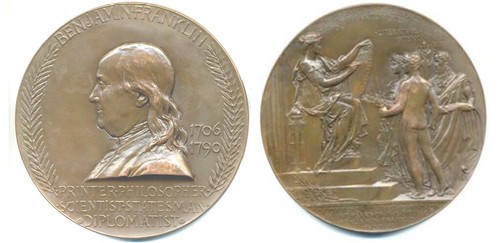
BENJAMIN FRANKLIN BICENTENNIAL MEDAL, 1906. Greenslet GM-118; Fuld FR.M.UN 7; Baxter 81. 100.7mm. Bronze. Augustus & Louis Saint-Gaudens, Sc. Edge marked TIFFANY & CO. About Uncirculated with some rub on the high points, more so on the reverse.
Obverse bust left with palm branches to each side. BENJAMIN FRANKLIN above. PRINTER PHILOSOPHER/SCIENTIST STATESMAN/ DIPLOMATIST below. The reverse, portraying the allegorical figures of HISTORY, SCIENCE, LITERATURE and PHILOSOPHY is a masterpiece showing the combined efforts of Augustus and Louis Saint-Gaudens. Their combined initials appear in a small monogram near the edge of the reverse.
Even though this medal was authorized by Act of Congress, the first striking was not done by the U. S. Mint. The contract instead, was given to Tiffany & Company. According to their records, two were struck in 18k gold and one hundred fifty five in bronze. One of the gold medals was struck and presented to the nation of France by Secretary of State Elihu Root. One hundred of the bronze specimens were distributed at the direction of the President of the United States, while the remainder were for the use of the American Philosophical Society. Each of these medals bear the Tiffany & Co. edgemark. According to Saint-Gaudens scholar, Michael Moran, a second striking of 200 bronze medals for the American Philosophical Society was made by the U.S. Mint in 1907. These medals have no edge mark. $2650.00

Rare U.S. & Worldwide Banknotes, Scripophily and Autographs
“The Copps Collection” of Colonial Stocks, Bonds, Documents & Fiscal Paper to be held in conjunction with the 3rd Annual Wall Street Coin, Currency & Collectibles Show.
Highlights include:
- From “The Copps Collection”, A 1792 U.S. Federal Bond Issued to and Signed by George Washington, this is one of three known, the other two are in an institutions, this is the first time ever at auction
- U.S. Colonial; Obsolete; Fractional; and, Large Type Notes including a high grade “Educational” Set of 3 notes along with dozens of other rare banknotes.
- Worldwide Banknotes including an outstanding U.A.E. Specimen Set as well as hundreds of other rare and desirable notes.
- Hundreds of U.S. & Worldwide Stocks and bonds including autographed certificates and autographs by Daniel Drew; Thomas Edison; Buffalo Bill Cody, Robert Morris and many others.
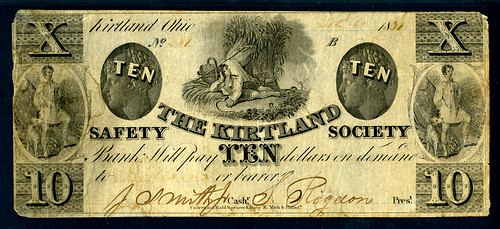
1580 Lemoine Avenue, Suite #7
Fort Lee, NJ 07024
Phone: 201-944-4800
Email: info@archivesinternational.com
WWW.ARCHIVESINTERNATIONAL.COM
ANS SEEKS ASSISTANT CURATOR OF AMERICAN COINS AND CURRENCY

ANS seeks an Assistant Curator of American Coins and Currency
About the Position
The American Numismatic Society seeks an energetic and creative Assistant Curator to oversee its collections of American coins, currency, medals and related objects. Since its foundation in 1858, the Society has played a leading role in the field of American numismatics, and wishes to expand its audience while continuing its traditional role as one of the leading academic institutions in the numismatic field. In recent years, a major focus of the Society has been on the digital presentation of the collection and the development of open web-based standards for doing so. The successful candidate will have the opportunity to build on a program of digital and traditional publications, exhibitions and teaching programs in American coins and currency for the general public, collectors, students and academics.
S/he will also work on parts of the collection outside the American field, for which training will be provided. The successful candidate is expected to work as part of a larger team on the ANS’s exhibition program, contribute to the ANS Magazine, and conduct significant research in his or her own chosen field. S/he will also be expected to play a role in the development of digital tools for the presentation and interpretation of numismatic material, in collaboration with our experienced technical staff. All ANS curators are expected to participate actively in the Society's development, outreach and public relations initiatives. This includes attending national coin shows, local numismatic clubs and similar events. Curators also provide instruction in American numismatics at the ANS Graduate Seminar and elsewhere.
The Curator should hold or be about to complete a Ph.D. or have equivalent academic qualifications in the history or archaeology of the Americas, in particular in areas in which coinage or currency make a major contribution to the understanding of the period. Experience in working with coinage or currency is a strong advantage but not required. S/he should also be proficient in at least one foreign language relevant to their field of specialism. The Curator is expected to be or become a recognized expert in his/her field, through study, research, writing, and publication on American coinage. The position is fully endowed and allows a competitive salary with excellent benefits depending on the experience of the successful candidate. Appointment will be made for two years in the first instance; subject to satisfactory performance the appointment may lead to a permanent position.
About the Society
Based in Manhattan, New York, the American Numismatic Society is one of the oldest members of the American Council of Leaned Societies. It maintains an active exhibition program, and publishes two scholarly journals, a magazine, and four monograph series. The Society’s collection of approximately 800,000 objects is one of the largest in the world. The American collection of coins, paper money, decorations, and related items contains c. 90,000 objects, the majority of which are catalogued online in MANTIS: (http://numismatics.org/search/). The archives of the Society provide papers and archival material of many major American collectors and artists, while the Society’s Harry W. Bass Library holds the country’s foremost numismatic collection of almost 85,000 volumes. The catalogues of both archives and library are available online.
The American Numismatic Society is an Equal Opportunity Employer.
For more information about the Society, and details of how to apply for this position please visit: http://numismatics.org/NewsEvents/2013AmericanCurator
SOME NEW COIN DESIGNS: OCTOBER 6, 2013
Ukraine's National Philharmonic Coin
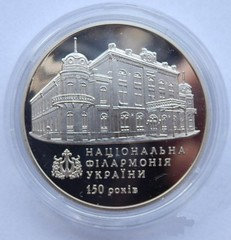
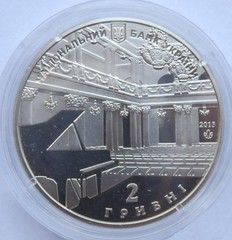
Ukraine's 2 hryvenia coin on 150 years of the National Philharmonic
Ukraine's Max Voloshin House Coin
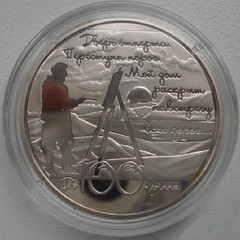
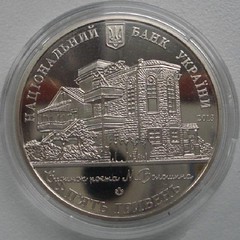
Ukraine's coin on 100 years of the Max Voloshin House
New Zealand's 1 Dollar Maori Art Coin
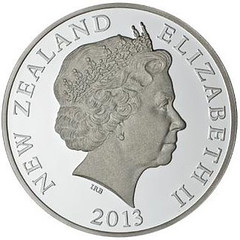
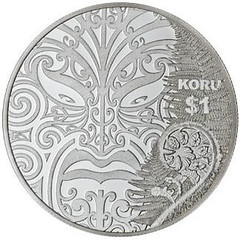
New Zealand's 1 Dollar Maori Art Coin
Finland's 150 years of The Diet Coin
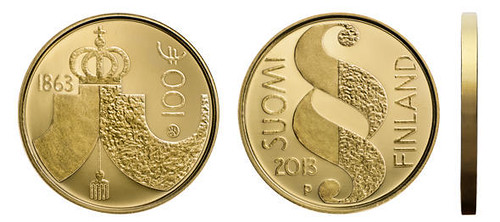
Finland's 100 Euro gold coin on 150 years of The Diet
Finland's Provincial Building Coins
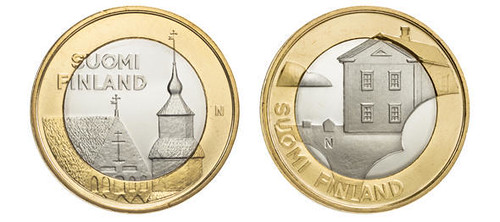
Finland will issue provincial building coins of Tavastia and Ostrobothnia
China's Year of the Horse Coin
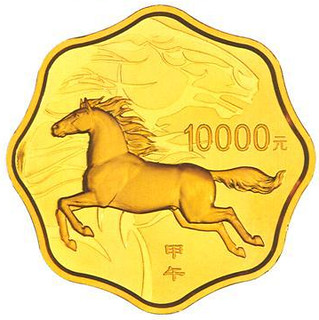
China will issue several coins on the Year of the Horse
Latvia's 1 Lats in gold
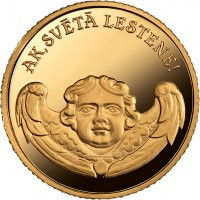
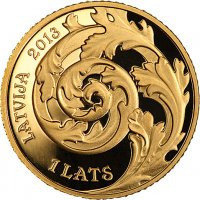
The head of an angel from the church altar
of the Lestene Church is featured on the coin.
Turkey's Airline Anniversary Coin
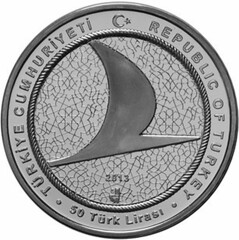
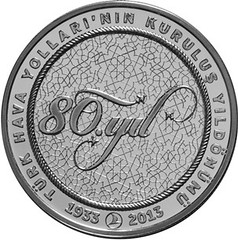
Turkey has issued a 50 Lira coin on the 80th Anniversary of its airlines
THE BOOK BAZARRE
TALES YOU LOSE: ARTIST PAINTS COINS
"Coins are actually massively-reproduced little sculptures. This project brings individual character to each replica, and makes us think: Are we able to like one cent more than others, just by injecting new stories in it? Those are the Tales You Lose."
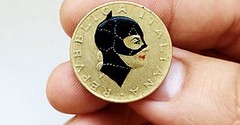

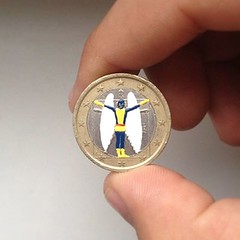
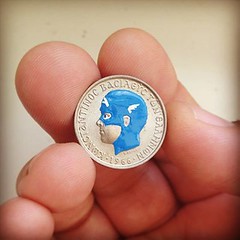
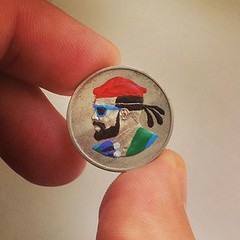
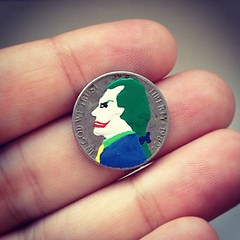
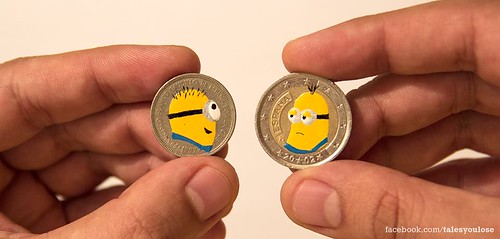
 The Artist at Work
The Artist at Work
To see more on Facebook, see: Tales You Lose (www.facebook.com/talesyoulose)
THE 1886 QUARTER DOLLAR PUZZLE
 1886 Quarter Dollar Puzzle
1886 Quarter Dollar Puzzle
by Robert Michel, LSCC #2352
I have loved Liberty Seated coins since I was six years old. The low mintage of the 1886 really caught my eye even at six when my grandfather gave me my first Redbook.
So, it was a dream come true when I purchased the finest known 1886 Liberty Seated quarter dollar graded PCGS MS67! I was so excited! At least I had my dream realized.
I also have a love for puzzles. There is a company in Vermont, www.stavepuzzles.com, that make the highest end handmade wooden puzzles in the world. I asked them to make a puzzle of my prized possession.
Here it is and I hope you enjoy the pictures!
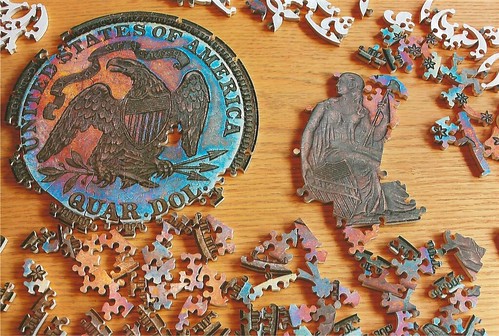
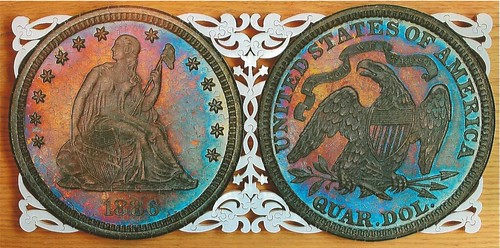
For more information on the Liberty Seated Collectors Club, see: www.lsccweb.org
FEATURED WEB PAGE: THE FITZWILLIAM MUSEUM
This week's Featured Web Page is The Department of Coins and Medals at the Fitzwilliam Museum in Cambridge.The Department of Coins and Medals embraces money in many different forms, from all parts of the world and spanning ancient to modern times, as well as medals since their origin in the Renaissance. With its rich collections and library, the Department is a centre for research and teaching in numismatics.
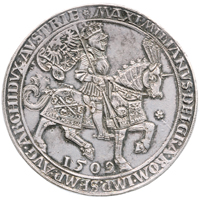
www.fitzmuseum.cam.ac.uk/dept/coins/
